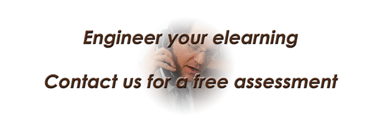Introduction
I would like to start this post with a little bit of background on Artificial intelligence (AI), feel free to skip this part if you do know what this AI thing is all about. AI is a computer system that can perform tasks that normally require human intelligence. For example, an AI system can be trained to recognize images or speech and provide a response based on its analysis of the data it receives.
But in this post, we will focus on how AI can be used for online student monitoring. This is an important subject since most monitoring systems are now highly automated. There is still some human interaction but, in many cases, the system works with some AI technology. This has brought many other issues to the forefront, especially those related to privacy and personal information protection.
What is Artificial Intelligence?
Artificial intelligence, or AI for short, is a branch of computer science that deals with the design and development of computer systems able to perform tasks normally requiring human intelligence. The term was coined by John McCarthy in 1955 at the Dartmouth Conference where he defined it as “the science and engineering of making intelligent machines.”
AI researchers have been working on building machines that can think like humans for decades now. In fact, some of the earliest work was done during World War II when Alan Turing developed a machine called “Turing Machine” which could solve complex mathematical problems by itself without any human intervention.
But what exactly are these machines capable of doing these days? There has been a lot of speculation on what AI systems can do so let’s check a real application: student monitoring in eLearning systems. But why should we care about the application of AI in these systems? Of course, automating the monitoring of eLearning students will help tremendously in making the whole process more efficient, but there is also a dark side to this: replacement of real people and the many concerns regarding the use of this system and the data it collects from students. But let’s look at some actual benefits of using AI for eLearning student monitoring.
Benefits of Artificial Intelligence for Student Monitoring
Any new technology that springs about will cause disruption in our society, it will bring good and bad consequences. In my opinion, we need to learn from both and be skeptical about the whole change, not just accept the change without making the right questions (or any question at all). So, let’s first look at the bright side of using AI systems for eLearning student monitoring, which include:
Monitoring student progress. AI can be used to monitor students’ progress and identify learning issues, which can help teachers improve their teaching methods. There are now sensors that can help estimate student attitudes during the monitoring process. These systems can identify behaviors through physiological responses such as eye movement, body movement, and even heart rate[3].
Automation of student data. AI has the ability to automate the collection and analysis of large amounts of data from multiple sources in real time, providing teachers with valuable insights into their students’ performance at any given point in time. Of course, privacy issues and data security are major concerns and steps should be taken in order to maintain student data.
Common Applications of AI for Student Monitoring
In general, when one hears about eLearning student monitoring the default application that comes to mind is proctoring of exams and tests, but that is not the only application for it. Here, we will mention some common applications of AI for student monitoring, which include:
Learning analytics. This is an application that uses machine learning to provide information about students’ performance, engagement, and progress. It can also be used to identify areas where students are struggling and provide them with targeted support.
AI-assisted tutoring systems. These systems use machine learning algorithms to provide personalized feedback on assignments and tests based on the student’s previous answers or performance in similar situations (e.g., if you answered incorrectly the last time you were asked this question).
AI-driven assessments (also called adaptive assessments). These types of tests adapt their difficulty level based on your responses so that they get easier or harder depending on how well you’re doing at answering questions correctly; they’re meant to measure what students know instead of how well they perform under pressure (like traditional multiple choice exams do).
The application of AI for eLearning student monitoring does have some challenges, some of which are mentioned below:
- Data privacy
- AI bias
- Accuracy of AI models
Implementation Considerations for AI-Based Student Monitoring
Data collection: The first step in implementing an AI-based student monitoring system is to determine the data that will be collected and how it will be collected. This can range from simple information such as a student’s name and grade level, to more complex information like attendance records or test scores.
System architecture: Once you’ve determined what data needs to be collected, you’ll need to determine how best to collect it. You’ll want your system architecture (the way in which your software operates) designed with scalability in mind so that as new types of data become available over time, they can easily integrate into your existing framework without disrupting its functionality or performance levels.
Security & Privacy: Ensuring that your AI-based student monitoring tool has strong security measures built into its design will help ensure both the safety of personal information stored within its database while also protecting against outside threats such as hackers attempting unauthorized access through hacking attempts like phishing scams.
Future of AI for Student Monitoring
The potential applications of AI in student monitoring are vast. It can be used to identify potential threats and prevent them from happening, as well as provide support for students who need it.
The use of AI in education can also help teachers focus on their jobs more effectively by automating tasks such as marking assignments or grading tests. This frees up time that they can spend on other things, like developing lesson plans or teaching new concepts to students.
AI has many benefits but also raises ethical concerns about privacy and data security–especially when it comes to children’s data being collected without parental consent or knowledge.[1]
Conclusion
In the end, the use of AI for online student monitoring can be a useful tool for teachers and parents to prevent students from engaging in cyberbullying or other harmful behavior. It also helps them understand their children’s behavior better by providing data that is accurate, real-time and easy to interpret. However, there are some challenges that need to be addressed before this technology can be widely adopted by schools and parents. For example:
- The accuracy of the data collected by AI-based systems may vary depending on how well they are programmed;
- Some students may feel uncomfortable sharing personal information with an automated system.
Thank you for reading. Like this post. Share it with others. Please, leave a comment below.
References
[2] https://www.teachhub.com/blog/20190314195747#AI_in_education
[3] R Daza, A Morales, R Tolosana, LF Gomez, J Fierrez, J Ortega-Garcia. edBB-Demo: Biometrics and Behavior Analysis for Online Educational Platforms. Association for the Advancement of Artificial Intelligence, 2023.


